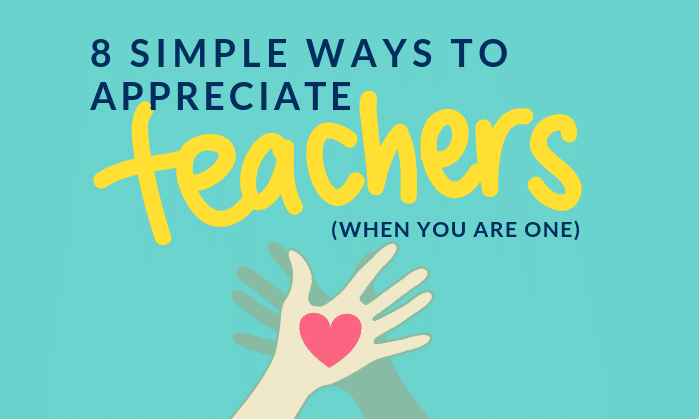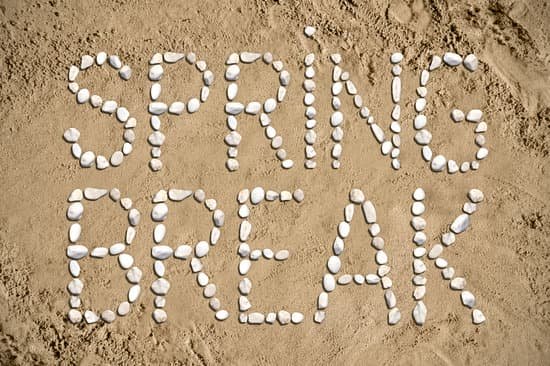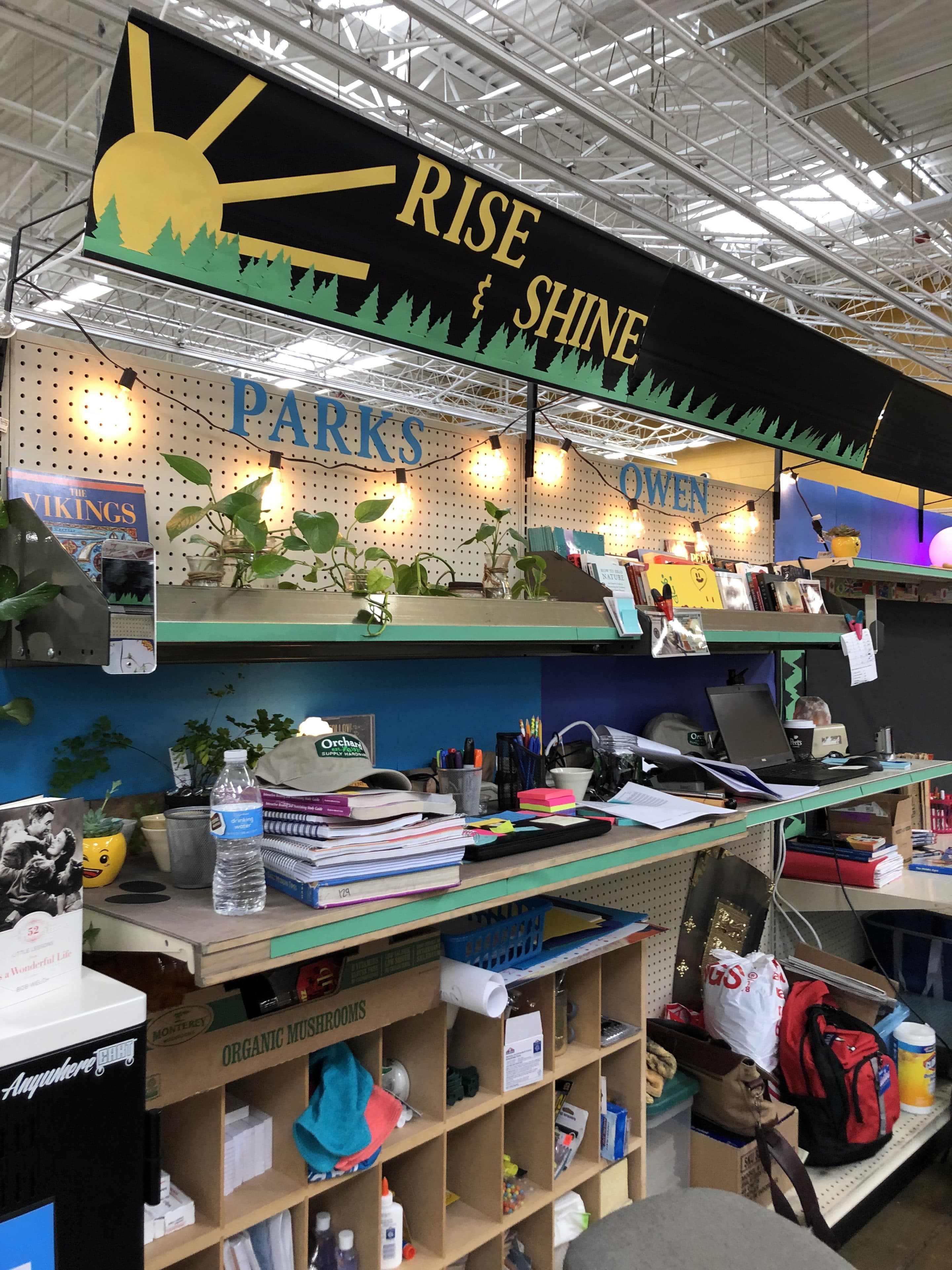
by California Casualty | Educators |
I know, I know. You don’t need someone to tell you how to appreciate teachers when you ARE the teacher; you know how to appreciate your own kind. But have you really attempted to show your support and appreciation for your fellow teachers in your building? If you have, then you’re way ahead of me. If not, then read on.
In the midst of our busy school day, we sometimes forget that there are simple ways we can show our colleagues that we care about and support them. We often need to be reminded that it doesn’t hurt to demonstrate our respect and appreciation for those with whom we spend our days. Teacher Appreciation Week is the perfect time to turn your thoughts into action!
As National Teacher Appreciation Week and National Teacher Day approach, consider showing your coworkers a little love with some of these simple ideas.
appreciate teachers
Ask for Advice
Soliciting advice from coworkers demonstrates respect. It can also be flattering for the advice-giver. Confide in someone whom you trust and pick their brain. You might like what they have to say and you’ve stroked their ego in the process.
Get Together
Spend time together with other teachers outside of school. Just being present with your fellow teachers sends the message that you care about and support them. Go out for a happy hour drink and appetizers. You might be surprised what you can learn about each other outside of work.
Collaborate
Working together on a common project or idea can help strengthen relationships. You don’t have to immerse yourself into a complicated, time-consuming task. Start small, like how to assess students at the end of a lesson, or what the next hallway bulletin board will look like.
appreciate teachers
Be “Friends”
No, you don’t have to be besties with all of the teachers in your building. This day in age, simply being “friends” on social media can mean a lot to someone. Many of us post about our personal lives. In many cases, our coworkers have no idea who we are outside of the school day. Getting a glimpse into one another’s personal lives can impact our perspectives of each other in a positive way.
Get Personal
Interact as much as possible with teachers in your building during the school day. Rather than shooting someone a quick email, go see them in person. If you don’t have time for a personal visit, call them on the phone. Tone in an email can often be perceived differently by the reader than what was intended by the writer. Avoid confusion, and its nasty aftermath, with a simple phone call or visit.
Offer to Help
Think of ways you can help your neighboring teacher. Maybe it’s making copies, or watching their class for a few minutes while they take a leisurely restroom break? They will appreciate the favor, and you’ve just earned yourself a few brownie points!
Bring A Teacher Their Favorite Drink
This one’s easy, but costs a few bucks. Find out one of your colleague’s favorite drinks and surprise them with it at school. Hopefully they’ll appreciate the gesture and you’ll feel good about paying it forward (and buying that second drink for yourself)!
Compliment A Coworker
Give a fellow teacher a genuine compliment about their teaching. Also inform your administrator and superintendent using specific examples. This doesn’t happen often enough. Don’t let great teachers go unnoticed!
Thank A Teacher
Join in NEAs 2019 “Thank A Teacher Campaign.” Post on social media using hashtag #ThankATeacher.
What do you do to show support and appreciation for the teachers with whom you work?

by California Casualty | Educators |
Students are hooked on their Smartphones. Just watch a group of teens – how many are typing or swiping something on their phones?
This is a phone-addicted reality, and many educators are grappling with the idea of allowing students to use their phones for structured school projects. If they use phones outside of school, why not allow teach them to use social media in the classroom?
Channeling “Phone Urge”
The way we communicate and get our news is rapidly changing. A number of instructors are now adapting by using social media in their classrooms. Certain sites, like Snapchat and TikTok, can be hard to monitor; however, integrating other social platforms into lesson plans can aid teachers in keeping students engaged. It can channel students away from using phones for non-instructional use. Plus, social media can help them keep teachers up on what is trending to find “teachable moments”!
Some instructors are now using Twitter to communicate with students and parents about homework, upcoming quizzes and important dates. Others are sending snap quizzes and discussion topics with a Tweet. Research is showing that engaging students via Twitter or other social media helps reduce their urge to become distracted by other platforms while in the classroom.
Teachers are also finding that using memes, GIFs, and emojis allow students to express themselves and convey thoughts and feelings in papers and homework assignments that they may have trouble writing about.
Incorporating smartphones and tablets during lessons can help energize student participation. Many educators are also finding that allowing technology in the classroom presents an opportunity to begin discussions about appropriate and inappropriate social media usage, and the associated dangers.
Resources
The NEA has numerous articles about the use of electronic devices and cellphones in schools.
Education Week blogger, Madeline Will, got great response after asking teachers about using social media and to share the memes and GIFS they’ve employed.
Edutopia has a useful article on 12 Ways Teachers are Using Social Media in the Classroom. It includes creating classroom blogs, sharing school work or news on YouTube, and connecting to other schools through various social media platforms.
For educators still a bit reticent about social media in the classroom, TeachThought has created a wonderful infographic and article about Six Ways Social Media Can Change your Classroom. This reinforces the ideas of learning what students are thinking, knowing what news and cultural things are trending, allowing for easier communication with parents, and globalizing the classroom.
Let’s face it, our world is getting more and more connected. Are your students using social media in the classroom?
For more information visit:
https://bit.ly/2C49ZOw
https://edut.to/2NfFUSz
https://bit.ly/2HfZ2vZ

by California Casualty | Educators |
Earth Day is celebrated each year on April 22nd. This day is a great opportunity to discuss environmental concerns and promote environmental awareness with your students. Check out the following websites and activities for Earth Day resources to use in your classroom.
Websites
United States Environmental Protection Agency
Head over to epa.gov/earthday for a variety of Earth Day resources. Learn about the history of Earth Day, watch Earth Day videos, and find out how to be an eco-conscious consumer. Plus, explore classroom project resources and lessons.
PBS LearningMedia
Search a large range of free resources by grade level, subject, and resource type. PBSLearningMedia.org offers lesson plans, images, videos and more from popular PBS television series.
Teaching History
Find a collection of activities, quizzes and lessons at TeachingHistory.org. Students can explore the history of Earth Day, conservation, and other topics related to the environment.
Science NetLinks
Prepare for Earth Day using Science NetLinks lessons and resources. Find teacher-friendly lessons, printables, audio files, videos, interactive and hands-on materials. These resources cover a variety of topics like conservation, ecosystems, ecology, and more.
Activities
Host a Solar Cookout
Challenge students to make a solar oven, then have cookout together! Explore alternative energy sources using solar energy. This activity from Scholastic walks you through the process of hosting a solar picnic. You’ll find reading materials, instructions for building a solar oven, free printables, and other resources about solar energy.
Tracking Trash
Students track how much trash is thrown away in the school cafeteria. Using a simple data table, students will identify the types of items thrown away (plastic, foil, paper bags, bottles, banana peels, etc). This information can then be used to create posters to hang in the building encouraging staff and students to recycle or use re-usable lunch items. Take it a step further and start a composting project!
Comparing Light Bulbs
This lesson from Energy.gov asks students to compare compact fluorescent and incandescent light bulbs. Students will learn about energy efficiency through this experiment. Grab your light bulbs and thermometer!
50 Earth Day Activities for Kids
TinkerLab’s 50 Earth Day Activities describes kids activities using natural and recycled materials, and creating outdoor art. From building a Fairy Garden to Making Your Own Nature Journal, these Earth-inspired activities will encourage kids to be kind to the planet.

by California Casualty | Educators |
You’ve nearly made it… Spring break is just within reach! This time off can be a great opportunity for teachers to get away. It’s also a time when teachers should take a step back from the stress of the classroom. Here are some great ways you can de-stress over your break. Try them on your vacation or stay-cation. Best of all, they cost little to nothing!
- Go For Walks – Walks, particularly on scenic paths, can help clear your head. Walking will also boost endorphins, which can help to improve your mood.
- Limit Time on Devices – If you are able, unplug from all devices. Ignore emails, social media, online games, tv, etc., even if it’s just for 10-15 minutes. Tablets, phones, computers, and other electronics can be causes of stress, loss of sleep, and depression.
- Listen To Music – Classical music tends to have more soothing effect, however, any music you love will fill you with the good feels. Check out some of the Spotify playlists we’ve put together!
- Laugh – Spend quality time with people you enjoy being around, watch a comedy or funny viral video, or read a funny book. According to the Mayo Clinic “laughter enhances your intake of oxygen-rich air, stimulates your heart, lungs and muscles, and increases the endorphins that are released by your brain.”
- Deep Breathing – Try some deep breathing exercises to help your body to relax and provides an extra boost of oxygen. If done over time, deep breathing can reduce blood pressure. Don’t know how? Here are some tips: breathe in through your nose and out through your mouth 10 times, focusing on your stomach rising and falling, and your breath flowing in and out. MindYeti.com is a great tool for teachers to use in the classroom and out of the classroom!
- Take A Long Bath – Bathing relaxes muscles, relieves anxiety, and provides some “me” time. Turn on some music or add some candles to make it extra tranquil.
- Sleep – Restful sleep is an essential key to staying healthy and strong. “Sleep is a necessary human function – it allows our brains to recharge and our bodies to rest. When we do not sleep long or well enough, our bodies do not get the full benefits of sleep, such as muscle repair and memory consolidation,” explains The American Psychological Association. Turn of that alarm and enjoy your rest.
- Find A Hobby – Have you always wanted to try a hobby or craft but never had the time? Take it for a test run over your break and let your creativity flow! Hobbies are a great way to soothe anxiety, especially if the actions are repetitive.
- No Grading, No Planning, No School – Try to avoid working on anything school-related over your break. This is your time to disconnect from “teacher mode” and rejuvenate for that last leg of the school year.
- Pet a Furry Animal – Petting or snuggling a fuzzy friend is stress-reliever. According to animalsmart.org “playing with or petting an animal can increase levels of the stress-reducing hormone oxytocin and decrease production of the stress hormone cortisol.” So, snuggle up and reduce that stress.
What’s are your favorite things to do during Spring break – whether to relax or have lots of fun? Share your ideas in the comments below!
by California Casualty | Educators, News |
Despite losing homes and setting up classes in a temporary building 25 miles away in Chico, Paradise Intermediate School (PINT) staff are back at work helping students. The vacant Orchard Supply Hardware store where the school is now housed is not the most inviting environment. Employees have done the best that they can under the circumstances. PINT School Lounge Makeover
California Casualty is gifting the School Lounge Makeover to offer a more soothing, useful area for instructors and support personnel to take a break, relax and recharge. PINT School Lounge Makeover
Principal Cris Dunlap, who is one of 35 PINT staff members who lost a home in the fire, said this offer means so much. “We’ve focused so much on giving students a learning space and place to be with their teachers and friends. As educators, we put others ahead of ourselves. It’s so nice that California Casualty recognizes the valor of our teachers and everything they are doing to keep the district going and keeping kids happy and learning.”
“We’ve seen the dedication of administrators, teachers and staff firsthand and we’re proud to show our appreciation,” said California Casualty Sr. Vice President, Mike McCormick.
Eon Office designers will be work with PINT staff to create the school lounge of their dreams. The finished project will be revealed later this spring. The lounge will be relocated back at Paradise Intermediate School once repairs there are completed.
Learn more about California Casualty’s School Lounge Makeover at www.schoolloungemakeover.com.

by California Casualty | Educators |
Our Education Blogger is a public school teacher with over a decade of experience. She’s an active NEA member and enjoys writing about her experiences in the classroom.
Your personal life is yours, and it is precious. It is also necessary. Especially during winter break. There is no need to feel guilty about leaving work behind each day when you exit your classroom door. Enjoying your time outside of school makes you a better teacher. Relationships with students, parents, and colleagues may also improve when you maintain a balance between work and home. Over the years, I have learned, but not yet quite mastered, several ways to create a balance between my work life and home life.
Don’t Give Out Your Personal Information To Parents or Students
If you must communicate with parents and students outside of the school day, sign up for a social media account you can use for your classroom. Don’t give out your personal phone number, email address, or home address. Many parents and students are able to set respectful boundaries. However, there may be some parents or students who will abuse this communication privilege. This can sour your relationship with a parent or student if they continue to overuse your attempt to be “available.” You don’t want to find yourself in a sticky situation that could get you into trouble.
Keep Work At Work
Leave all of your grading and planning at school. Home should be your sanctuary, not a second office. Your family, pets, and brain will thank you for it.
Maintain Consistent Work/Office Hours
Try to arrive and leave at the same time each day. Make sure parents, students, and colleagues are aware of your daily “office hours.” Each day, I make a point to arrive no later than 7:15am and leave no later than 4:30pm. My “office hours” are 7:30-7:50am and 3:15-4:00pm. If a parent or student needs to meet with me, they know when I will be available.
Enjoy Family Time
Savor each moment you have with your own family. I love my job, and I adore my students, but I refuse to sacrifice precious time with my own family. I can never get that special time back. Grading papers, planning lessons, and returning emails can wait until the next day. So, file away those tender memories with your family without the guilt.
Protect Your Personal Social Media Accounts
Being “friends” on your personal social media with students and parents is not required. I am protective of myself and my family, so I stick to a few of my own rules for my personal social media account:
1) never be friends with a current student
2) students must be at least 13 years old (most social media services and apps require users to be 13 years old to join)
3) never be friends with a current student’s parent(s) or other family members
4) keep profile set to private
Social media can bring with it negative talk, upset feelings, and online bullying. I have no desire to get myself, or my family, involved in anything of the sort.
Don’t Check Work Email At Home
I review my work email on my school computer throughout the day, and in the moments before I shut the computer down to leave for the day. Then, I don’t check it until I arrive at school the following day. I used to have my work email synced to my personal cell phone. Big mistake. I found myself getting emotionally worked up at home about the occasional negative email from a parent or colleague. When there were “security” threats to our district email system (mostly viruses), my personal phone, along with all of my personal accounts, were at risk. Forget about sleeping when all I can think about is how I’m going to respond to the angry parent, or wondering if my phone would be affected because of a naive colleague who opened an email attachment from an unknown sender! Ditching my access to work email from home has significantly lowered my stress level (and I’ve even gotten a few more zzzz’s)!
Recruit Help
It’s okay to ask for help. Get a neighbor, a friend, a babysitter, or a grandparent to help you out at home if you need it. You aren’t superhuman! We all need a little extra support from time to time.
Be Realistic
Be realistic about what you can and can’t do. There may be nights that you won’t be able to cook dinner. That’s what delivery and take-out are for! It’s okay to bring a frozen, microwave meal for lunch (although that 5-minute cook time really eats into my lunch time). I promise, no one will judge you! Yes, it’s okay for dirty laundry to sit around in the hamper for a few days. You’ll get to it when you can.
Be Disciplined
Stick to it and mean it. If you crave more personal time, then be picky about your work hours, how you spend your time outside of school, and choosing to leave work at work. If you don’t think you can be disciplined, ask someone to help you by holding you accountable. Your partner or spouse can make sure you’re not checking work email, or bringing home papers to grade. Your best friend can check in on you to see if you’re keeping the right company on social media.
We’d love to hear from you! How do you create a balance between work and home?
This article is furnished by California Casualty, providing auto and home insurance to educators, law enforcement officers, firefighters and nurses. Get a quote at 1.866.704.8614 or www.calcas.com.







